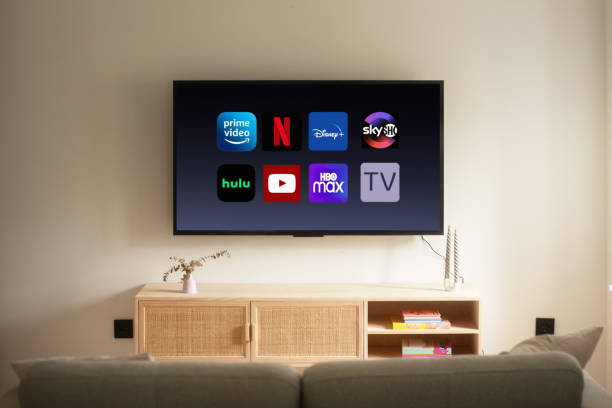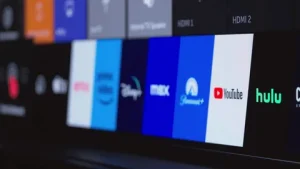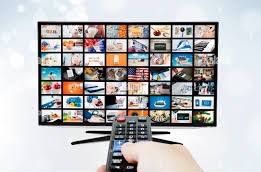Introduction:

Streaming HD channels has become one of the most popular ways to enjoy entertainment nowadays. As technology continues to evolve, the demand for high-definition (HD) content has surged. The capacity to watch HD and 4K streaming video at home has changed the entertainment sector. With the rise of online HD broadcasts and live HD channels, more viewers are opting for streaming alternatives over traditional cable TV. In this article, we will delve into the world of streaming HD channels, giving you with everything you need to know, from comprehending HD technology to locating the top platforms offering these services.
Streaming HD channels not only deliver amazing watching experiences but also allow you flexibility. Unlike traditional cable TV, streaming services allow consumers to enjoy live TV in high definition at any time. Whether you favour sports, movies, or news, streaming HD channels are excellent for individuals who wish to cut the cord but still enjoy the same high-quality content. Let’s discuss why streaming HD channels are the future of television.
What Are Streaming HD Channels?
Streaming HD channels refer to television broadcasts streamed on the internet in high-definition quality. Unlike traditional TV, where you rely on a cable or satellite connection, streaming HD channels give a more flexible and accessible option. These services provide users access to a large choice of live HD channels, sports events, movies, and TV series without the need for a physical cable connection.
The increasing popularity of streaming platforms like Netflix, Hulu, and Bing IPTV reflects the surge in demand for online HD broadcasts. These services allow you to watch HD and 4K streaming material on-demand, allowing greater control over your viewing experience. From classic TV programs to live sports, streaming HD channels give unrivalled access to premium entertainment, all in crystal-clear quality. As streaming services grow, so does the technology underlying them, boosting picture quality and user experience.
Benefits of Streaming HD Channels Over Traditional Cable TV
One of the main reasons people are flocking to streaming HD channels is the freedom it affords. Unlike cable TV, which frequently comes with costly fees and long-term contracts, streaming services allow customers to pay for just what they want to watch. With no contracts to sign and customisable subscription plans, streaming HD channels allow you control over your entertainment.
Streaming services also offer on-demand material, meaning you can view your favorite shows and movies whenever you want. Live TV in high definition allows you to view real-time broadcasts of your favorite sports, news, and events. Furthermore, several platforms now provide a combination of HD and 4K streaming, delivering even better visual quality. For sports aficionados, watching live HD channels on a huge screen brings the action to life, with vivid details and crystal-clear clarity that standard cable TV simply can’t equal.
How to Choose the Right Streaming Service for HD Content?
With so many streaming services offering HD and 4K material, it might be daunting to find the appropriate one for your needs. Here are some crucial elements to consider when selecting a streaming service:
Content selection:
Make sure the service offers a large selection of live HD channels, sports, movies, and TV shows that cater to your tastes. Services like Bing IPTV allow access to over 21K live HD channels and more than 185K VODs.
Streaming Quality:
Look for providers that offer 4K and HD streaming to ensure you get the best possible watching experience. Streaming services like Netflix and Amazon Prime offer HD and 4K material, with choices to select the video quality based on your internet bandwidth.
Compatibility:
Choose a service that supports numerous devices, such as smart TVs, smartphones, tablets, and streaming devices like Roku and Amazon Firestick. You want to be able to stream HD channels on whatever device you possess, whether you’re at home or on the move.
Price:
Streaming services vary in price, so make sure to compare plans. Services like Hulu + Live TV and YouTube TV offer live HD channels with reasonable subscription rates, while platforms like Bing IPTV give premium HD channels with several membership levels.
Understanding the Impact of HD Streaming on Entertainment
The emergence of HD and 4K streaming video has fundamentally transformed the entertainment scene. Traditional cable TV was previously the go-to for live TV and on-demand programming, but now streaming platforms are grabbing the lead. Streaming services give consumers with the opportunity to watch live TV in high definition without the limits of cable TV contracts.

The impact on content providers and the industry is severe as well. Studios and broadcasters are turning towards HD and 4K streaming, guaranteeing that the quality of the material matches the high requirements of modern technology. Viewers may now view movies, shows, and live sports with astonishing definition, depth, and color. HD content has made it easier for viewers to have immersive watching experiences, especially for sports enthusiasts who want to capture every moment of the game in high definition.
Streaming HD Channels on Different Devices
When it comes to streaming HD channels, the device you utilise plays a huge effect in your viewing experience. Fortunately, most modern gadgets offer HD and 4K streaming, allowing you to enjoy material on a range of screens. Here are some common devices for watching live HD channels:
Smart TVs:
Most smart TVs today enable HD and 4K streaming. With built-in apps like Netflix, Hulu, and YouTube TV, you can quickly access your favorite live HD channels immediately on your TV screen.
Streaming Devices:
Devices like Roku, Amazon Firestick, and Google Chromecast allow you to stream HD entertainment from your smartphone, tablet, or computer to your TV. These devices enable 4K and HD streaming, giving high-quality picture and sound.
Tablets and Smartphones:
If you’re usually on the road, streaming HD channels on your tablet or smartphone is a useful choice. Platforms like Netflix and Hulu allow you to view live HD broadcasts on smaller displays, providing you flexibility no matter where you are.
Laptops and PCs:
Laptops and desktops also allow access to streaming HD channels, and many services now offer browser-based streaming for easier access.
Future of Streaming HD Channels and 4K Content
The future of streaming HD channels is bright. As internet connections improve and more viewers convert to online streaming, we may expect even higher quality entertainment. The move from HD to 4K video is already underway, with companies like YouTube TV and Netflix offering 4K streaming alternatives. 4K content gives a clearer, more detailed image than normal HD, delivering an even more immersive experience for viewers.
In addition, streaming providers are always updating their technology to offer flawless viewing experiences. The next several years will likely witness the mainstream adoption of 8K content, and new developments such as immersive sound technologies, advanced AI algorithms for video quality optimisation, and interactive content will further improve the streaming scene.
Tips for Improving Your Streaming HD Experience
To get the most out of your streaming HD channels, consider the following tips:
Upgrade Your Internet Connection:
A fast internet connection is important for watching HD and 4K video without buffering. For HD streaming, strive for at least 5 Mbps, and for 4K, aim for 25 Mbps or greater.
Use a Wired Connection:
For the most consistent and fast streaming experience, consider using a wired Ethernet connection instead than relying on Wi-Fi.
Choose the Right Device:
Make sure your gadget supports HD or 4K quality to fully appreciate the benefits of streaming HD channels.
Optimize Your Streaming Settings:
Many streaming sites allow you to alter the quality of the video. Set your quality to the highest level available for the best viewing experience.
Check for Updates:
Ensure that your streaming apps and devices are updated to the newest versions to take advantage of new features and improved streaming quality.
Conclusion:
Streaming HD channels have drastically altered how we watch television. With the convenience of online HD broadcasts, the opportunity to view live HD channels on-demand, and the freedom to stream content across various devices, it’s clear why so many people are preferring streaming services over traditional cable TV. As technology continues to advance, we may expect even Live TV in high definition material, faster streaming rates, and an even better viewing experience. Whether you’re watching sports, movies, or TV shows, streaming HD channels deliver the finest entertainment experience. The future of television is in high definition, and it’s available at your fingertips.
Frequently Asked Questions(FAQs)

1. What are streaming HD channels?
Streaming HD channels are television broadcasts that are transmitted on the internet in Live TV in high definition high-definition quality. These channels can contain live sports, TV series, movies, and more, either on-demand or via live broadcasts.
2. How do streaming HD channels differ from typical cable TV?
Unlike regular cable TV, which requires a physical connection, streaming HD channels are supplied via the internet. They offer greater flexibility, no long-term obligations, and access to content across numerous devices such as smartphones, tablets, and smart TVs.
3. What do I need to stream HD content?
To stream HD material, you need a good internet connection, a device that supports HD or 4K resolution (such as a smart TV, laptop, or streaming device like Roku or Amazon Firestick), and a membership to a streaming service that delivers HD or 4K content.
4. Can I watch live sports on streaming HD channels?
Yes, numerous streaming providers offer live HD broadcasts of sports events. Services like Bing IPTV, Hulu + Live TV, and YouTube TV allow access to many sports channels, including live HD sports programming.
5. What is the difference between HD and 4K streaming?
HD streaming delivers a resolution of 1080p, delivering a clear and sharp viewing experience. 4K streaming, on the other hand, offers a resolution of 3840 x 2160 pixels, giving four times the detail of HD material, resulting in a clearer and more immersive viewing experience.
6. How can I improve my streaming HD experience?
To improve your streaming experience, ensure you have a high-speed internet connection (at least 5 Mbps for HD and 25 Mbps for 4K), utilise a wired Ethernet connection, and select devices that support HD or 4K resolution. Additionally, tweaking the video quality settings on your streaming platform can assist.
7. Is it feasible to watch HD content on a mobile device?
Yes, many streaming services allow you to view HD material on mobile devices such as smartphones and tablets. Apps from providers like Netflix, Hulu, and YouTube TV support HD content, providing high-quality watching on the go.
8. Are there any free services for streaming HD channels?
While most premium streaming services charge for access to HD programming, certain platforms allow limited free access to Online cable TV HD channels. Free services may feature commercials and give less options compared to subscription services like Bing IPTV, Hulu, and others.
9. What internet speed do I need for HD streaming?
For smooth Online cable TV HD streaming, your internet connection should have a minimum speed of 5 Mbps. For 4K streaming, strive for at least 25 Mbps to eliminate buffering and offer the best quality watching experience.
10. Can I view HD channels without a cable subscription?
Yes, streaming online cable Tv HD channels allows you to cut the cord and experience live TV in high definition without a regular cable subscription. Services like Hulu + Live TV, Sling TV, and YouTube TV give live HD channels without the need for cable.
